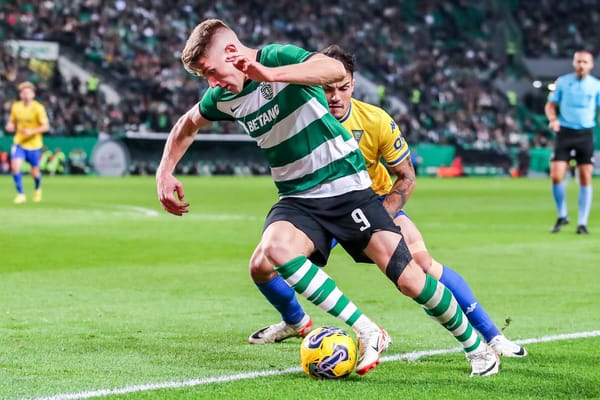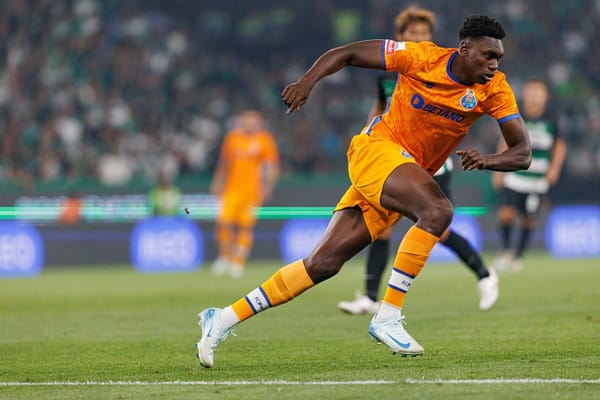Alexia Putellas – Shaping Barcelona’s Legacy
Alexia is without a doubt the one player that truly defines FC Barcelona Femini and their legacy. This Ballon D'Or winner is pioneering the role of women in football.

It seems like becoming a footballer for Las Blaugranas was always written in the stars for Alexia Putellas.
What we see today as the biggest female football star in the world did not come about as just an overnight success. Alexia was a work in progress that took years of pain, patience, tolerance, and hard work from her and her team to develop into the player she is today. She is without a doubt the one player that truly defines FC Barcelona Femini and has shaped their legacy to become part of who they are today. This is the story of Spain’s greatest export.
The Spaniard’s beginnings date back to her childhood when she was nine and playing football with the boys between classes on the playground. It is here where the story of Alexia Putellas starts, and it is not without its fair share of ups and downs.
Alexia comes from a sporting-mad family with basketball, roller hockey, and tennis all a staple at home alongside football. She was enrolled in those three sports before ultimately falling to the wayside as she stuck to football as her sport of choice. Her family are Barcelona fans which automatically trickled down as her choice of main club. Mollet del Valles is the town she grew up in, a 30-minute drive from Barcelona where she would travel with her father to watch the Catalan club play at Camp Nou. They were part of the local supporters group known as ‘Penya Barcelonista Mollet del Valles’, who would organise these matchday outings from her town. These regular trips to the iconic stadium only further drove her love for the game and encouraged her to want to play more.
Watching the likes of Andrés Iniesta, Rivaldo, and Ronaldinho was a profound experience for her and they became the players she idolised growing up. Their influences can all be seen in parts of her game, but it wasn’t just the men’s team she followed religiously — Louisa Nécib of Olympique Lyon Feminin is another one of her idols and an early visualisation of what her future could look like.
Alexia’s father — Jaume Putellas Rota — was her biggest fan. He watched every game from the sidelines, fixated only on his daughter. He would make three-hour trips from Barcelona to Levante every Sunday to watch her play when she moved away from her home city. Jaume dedicated himself to Alexia’s football career, picking her up from school, dropping her off at training, and watching her matches. It was everything a dedicated parent could do for their child and usually, they experienced their biggest successes together but alas, he wasn’t able to witness the glorious success of Alexia’s career. He tragically passed away weeks before she led the national team to a European Under-19 Championships final, with a heart condition that he had been battling for over a year until finally giving in.
Many accounts list Alexia as a not shy, yet reserved individual with leadership qualities seen from a very young age. In an interview with The Athletic, Charlotte Harpur spoke to Alexia’s P.E. teacher, Marce Esteban, who recalled Alexia’s personality at school:
“[Alexia] would make jokes, she was a very close person, she explained things. Other girls and boys don’t have the communication skills but Alexia, yes. She was one of the leaders of the class.”
Her footballing career started with CF Mollet UE boys' team but quickly moved on to a proper girl's team. At the age of seven, she joined Sabadell FC, 15 kilometres from her hometown, and played with girls five years older.
The team isn’t just famous for housing Alexia at an early age but also has had former Barcelona, Arsenal, and Manchester City midfielder Vicky Losada and former Real Madrid forward Marta Corredera in their ranks, both of whom played with Alexia at the age of 12. Her senior career path wasn’t quite linear: she spent a season at Barcelona’s youth academy before moving to Espanyol, where she stayed for four years.
At 17 years of age, she joined Levante in 2011, the first time she had been away from home, however, that only lasted one season. Her return to Barcelona was only a matter of time, with her homecoming at last taking place in 2012. Though Barcelona weren’t professional till 2015, there was more structure than her previous stint and one where she could thrive.
From here, it’s only been an upward trajectory for the Spaniard. Alexia’s career path and what we see today is the result of her hard work and family backing when she was growing up. What we see at Barcelona is the next generational talent coming through to establish herself as a footballing supremo. The rest of this chapter is dedicated to providing a full, comprehensive understanding of Alexia the footballer and what makes her arguably the world’s best.
Sam Kerr at Chelsea, Ada Hegerberg at Olympique Lyon, and Christine Sinclair for Canada are all players that have one factor in common: the stardom they bring to their sides. They are the talismanic figures with big-game mentalities to consistently drag their teams from near-impossible situations, thus giving them their world-class status.
Alexia is that player and more for FC Barcelona Femini. The club as an institution have been known to house some of the best players in the world. On the men’s side, Lionel Messi is undoubtedly top of that list, but it also includes Neymar, Xavi, and Iniesta who have all made the Nou Camp their theatre to perform and leave a legacy that is etched in Barça folklore. Alexia is now undoubtedly part of that elite list of names.
‘La Reina’ (The Queen) is the name given to Alexia after she was crowned the Ballon d'Or Féminin winner in 2021 and 2022. Being named the best player in the world for two seasons is a true achievement and a reflection of her status in the public eye — there is a massive public following for her to the point of blind faith. Anything and everything Alexia does is documented and marvelled at. This extends into the club itself where the influence she has reaches from the dressing room all the way to the club's hierarchy is undoubtedly rare and can only be compared to Hegerberg’s effect at Lyon.
The last three years of Alexia’s playing career have been a whirlwind with several ups and downs. The Spaniard has experienced the highs of winning the 2021 and 2023 UEFA Women’s Champions Leagues and 2023 FIFA Women’s World Cup, and the lows of losing the 2022 UWCL title in stunning fashion to Lyon and suffering a torrid ACL injury that promptly kept her out of the 2022 European Championship.
However, her fortuitous comeback towards the end of the 2022/23 season did subsequently allow her to make the Spanish squad that won the World Cup. Even though she didn’t have as much on-field influence due to the limited number of minutes through the injury, Alexia’s contributions to club and country are innumerable.
In Alexia’s absence, the team had won the Supercopa, another Liga F title, and their second Champions League title. Though they came away with the major trophies, Alexia’s absence nonetheless caused major tactical headaches for Giraldez throughout the 2022/23 season.
The league is considered an expectation at this point, with the UWCL being the main priority going into every season to catch up with Lyon. Looking at the big picture, they still have some distance left to reach and match Lyon’s accolades. And yet they have matched the Lyon club in one particular regard, as Hegerberg can be compared with Alexia as the club’s talisman. Both players share certain similarities and parallels that echo the greats of the game. Both players are leaders of the team and hold a significant influence over the dressing room. Their every action and decision has an untold effect on players’ behaviours and mentality. One of the reasons for their big-game mindset and never-give-up attitude stems from their relentless will to win at all costs. which inevitably trickles down to the rest of the team.
Barça’s midfield engine
Now, who is Alexia the player?
Simply put, she is a tactical genius. Her game puts crowds on the edge of their seats and she’s single-handedly won games for Barcelona when they’ve most needed her. The creative midfielder plays in the engine room of Barça’s industrious midfield and is the player this entire team is based around. Alexia can be described as a physical, box-to-box midfielder who uses incredible positioning, timing, and box awareness to gate-crash the opposition penalty area.
As far as the setup goes, in a midfielder three, she would most often be the midfielder who was still close enough to the other two midfielders to offer a direct outlet if there was any extra pressure coming from the opposition during the build-up.
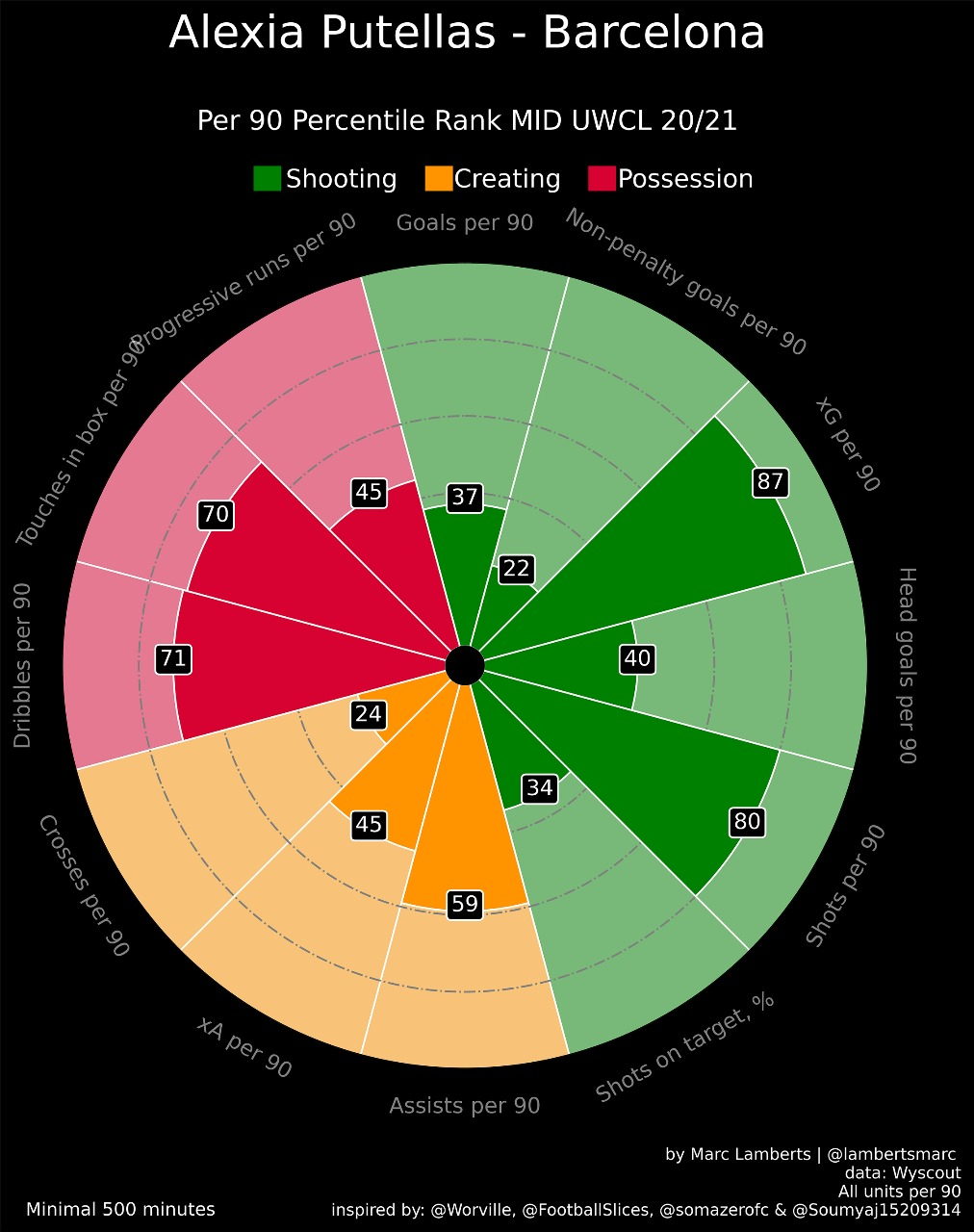
Alexia’s data sums up her playstyle in one graphic. The stats above are reflective of the Spaniard’s performances across her UWCL 2020/21 season, where you can see her high rankings in xG per 90, attempted shots per 90, attempted dribbles per 90, and touches in the box per 90. Each of these data points represents the attacking force she is and tells us that Alexia is more of a goal-scorer than a creator. This isn’t to say that she can’t be creative, but the combination of her on-the-ball and off-the-ball run timing is impeccable. How she drives through the thirds is truly impressive, sometimes even dropping into the defensive third to pick up possession.
Typically operating from the left side of a midfield three in Barça’s 4-3-3, Alexia’s best work comes as a deep-lying player disguised as a No. 10. Her specific role for Barcelona is to maximise the spaces between the lines and exploit gaps in the final third by being at the end of or playing the final pass. Alexia plays in a system that has freedom within the borders of said system. Essentially, she is free to play her natural box-to-box role as long as it’s within the confines of the overall system Jonatan Giráldez has put in place. This enables us to view the best version of Alexia that complements not only her strengths but also her teammates. If you look at her movement patterns from the No. 8 position, it comes from her ability to drive between the lines with absolute precision. This is an underrated skill of any box-to-box midfielder and though she isn’t the quickest player, Alexia’s timing is impeccable and that also comes from her ability to anticipate.
The anticipation and skill she has in that position are reminiscent of a diminutive, dynamic attacking midfielder who acts as a second striker and scores goals. Anticipation is not just for knowing where the ball is going to be played, but it’s also for knowing what positions to take up that will move opposition defenders around for the ball to be played.
What makes Alexia’s role very important is Barcelona’s need to have a player make late runs into the box. The way the centre-forward drops deep to connect with the midfield and the wingers drifting inside means that all this movement from the surrounding players requires an outlet and that player is Alexia. Between the 2018/19 and 2021/22 seasons, she only failed to score double-digit goals in one season. Her goal tally reads as follows: 16, 9, 18, and 24 — which is impressive given the number of goal scorers Barcelona already have in their ranks. The crux of her goals comes from her intelligent movement patterns and how she understands the space around her.
When you look at the way Alexia moves, you quickly begin to notice how intelligent her positions are because the areas she takes up are often between players to confuse their marking responsibilities and ultimately move them out of position. It’s her off-the-ball movement that is the crux of her game and allows her to get into good places to score or assist. There’s an excellent example from the 2021/22 season where you can see how Alexia’s off-ball movement makes this goal possible. The next graph shows a passage of play against Real Madrid that comes towards the end of the first half where Barça are trying to find a way through Madrid’s defensive block.
The ball starts off on the left with interchanging passes being played but is eventually played out to Patri Guijarro in the middle. The defensive midfielder sees Alexia’s move from a deep left position before she receives the ball and plays a one-touch pass into the path of the Barça captain. Alexia’s movement is incredible, having ghosted through multiple Madrid players to find acres of space inside the box. After a neat touch away from the neighbouring defender, she gets her shot away and scores.
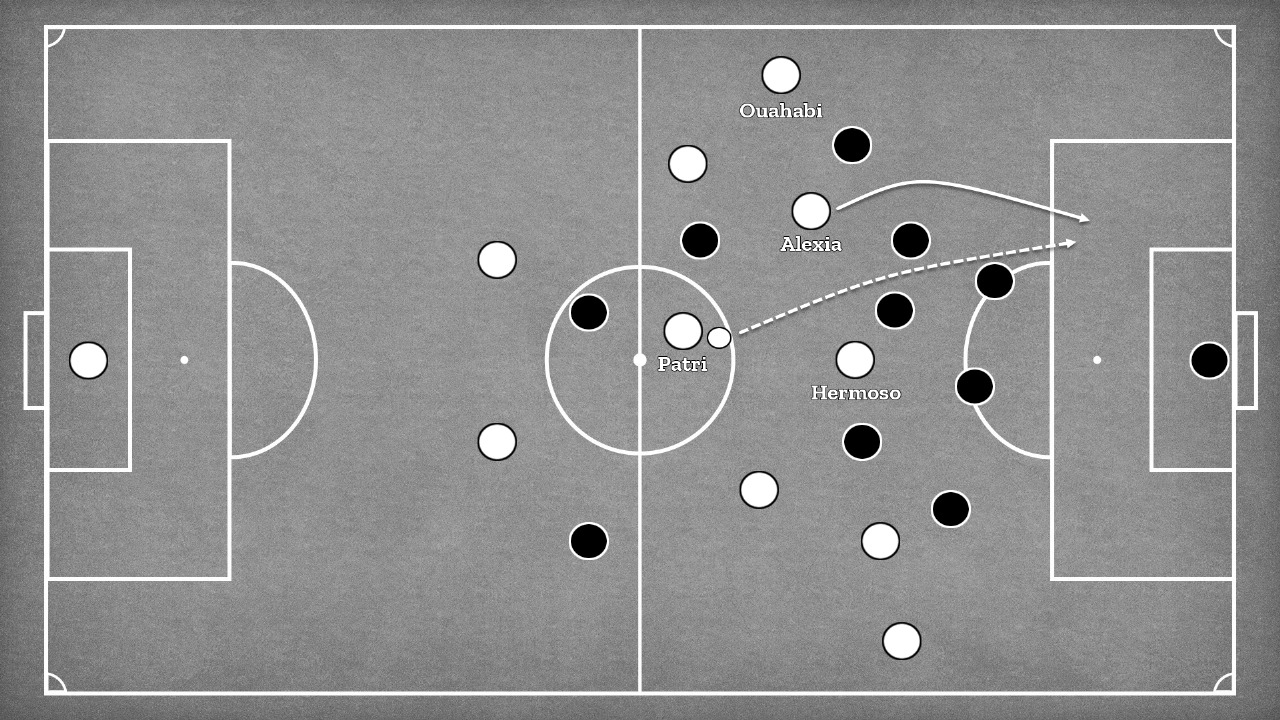
Even her ball progression through the thirds is exquisite. Alexia’s on-ball movement is equal to, if not better, than her off-ball patterns of play. The biggest strength of Alexia’s game here is her ability to operate and drive through tight spaces over distances and short bursts.
Given opposition teams’ preference to press Barcelona in midfield, it becomes important for them to have an outlet to play out of their half through a more direct route. Though she only ranked in the 45th percentile from our earlier graphic, Alexia’s ability on the ball is nonetheless highly valued in Barcelona’s midfield. Aitana Bonmatí has arguably better ball progression ability but her role differs from that of Alexia’s.
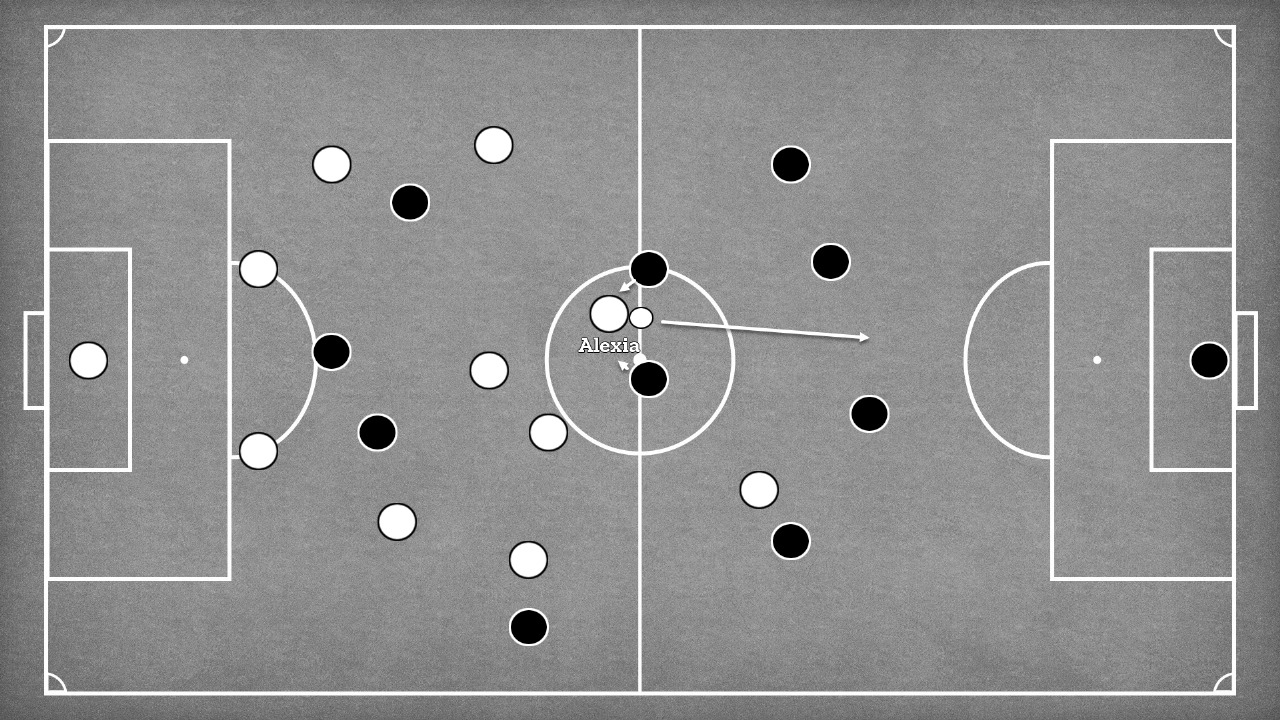
Playing against Valencia in the same 2021/22 season, Barcelona were looking to counter-attack the opposition after thwarting their attack. Valencia lost the ball in Barça’s penalty box but had enough players back to deal with the situation. Alexia receives the ball just outside of her penalty area from Leila Ouahabi and just looks to drive forward.
Alexia’s first touch is lethal and puts her on the front foot to go forward. Here she pushes it just in front of her to evade the lunging tackle of the first Valencia player and drives through to the final third. She then plays a pass out wide to Ana-Maria Crnogorčević who is in space to create a crossing opportunity.
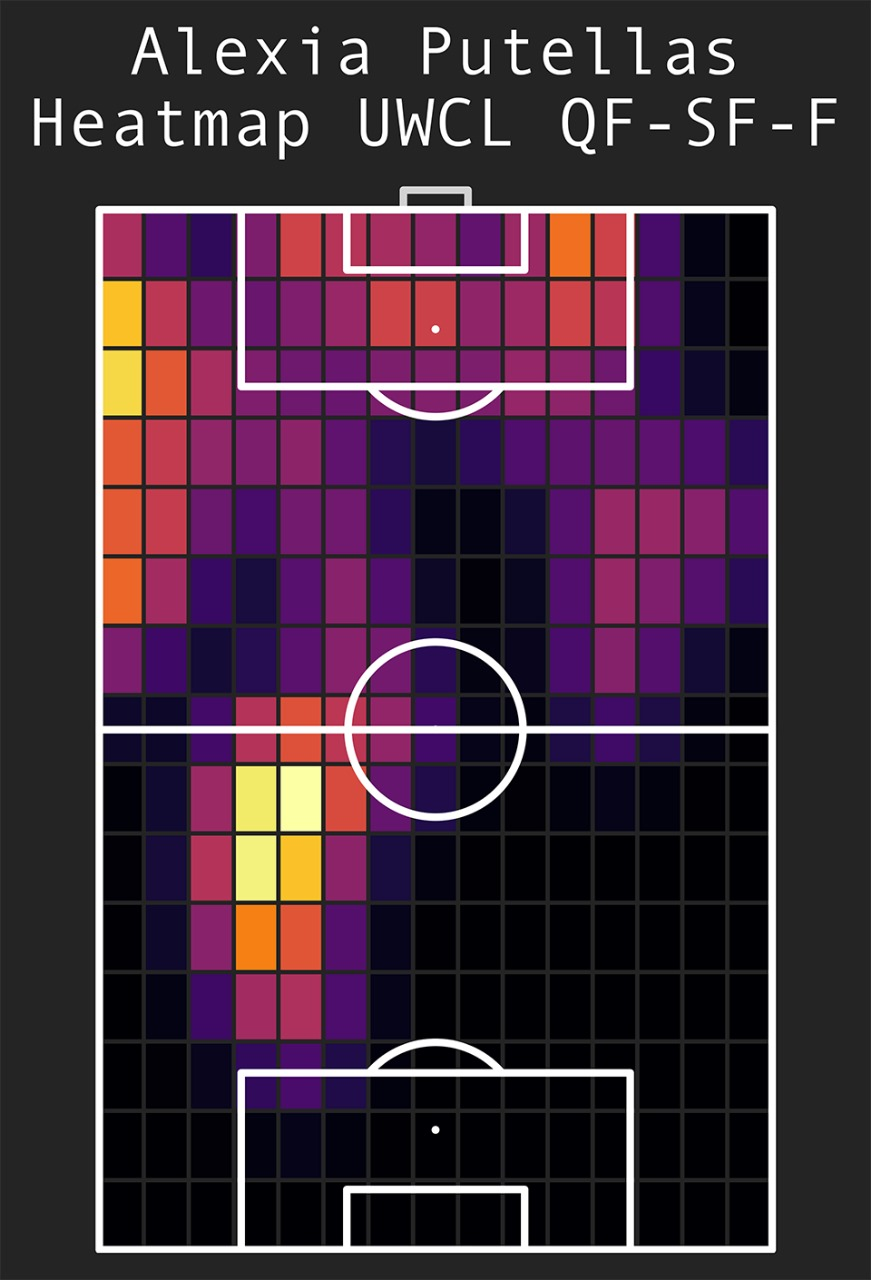
The graphic above depicts Alexia’s ball touches in games. Though this is limited to the quarter-final, semi-final, and final of the UWCL (2020/21), it does make for interesting reading. A higher frequency of her possessions received is either deep on the left defensive half-space, left-wing, or the six-yard box. This can easily be interpreted as Alexia’s involvement in build-up play, where she receives the initial pass before moving it out to the left, makes her run through the middle to reach the six-yard box and attacks the space there.
The left-wing activity is arguably the most intriguing because it seems out of place. However, Barcelona's play is predicated on patience too. When they do not see a clear opening, they tend to play in passing triangles across the left wing where they usually have the left-winger, full-back, and Alexia looking to create third-man combinations, similar to the example in Figure 31 where Alexia makes her run off the left.
In all of this goal-scoring, it might be easy to forget that Alexia is also a competent creator. Though the numbers do not reflect this, Alexia’s vision and creativity are unparalleled and help to break down low blocks when spaces become compact for penetrative runs. Her preference is for much shorter passes, usually to help recycle possession to move it forward until an opportunity arrives.
The main driving force behind her passing is her ability to spot runs ahead of her. Similar to the way she operates with her progression ball-carrying and is able to see where she’s going to receive the ball, so too does her passing operate, where she can spot the run before she receives the ball and is able to play one-touch passes into the path of the runners ahead of her.
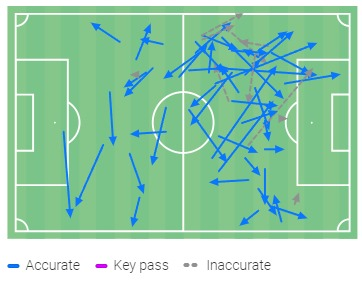
You look at the profile of players she’s played with over the years and it’s easy to see why Alexia has been a success in this regard. Without willing runners, the creators aren’t able to create. Geyse, Asisat Oshoala, Crnogorčević, Caroline Graham Hansen, Lieke Martens, and Salma Paralluelo are just a few players that play on the shoulders of defences and are perfect candidates to be willing runners in behind defences.
The figure above is Alexia’s pass network from the second leg of their semi-final against Wolfsburg in the 2021/22 UWCL and as you can see, there are many clusters of short passes made across the pitch but are heavily predicated on the left side with many of them forward-facing. The longer the length of passes, the more likely they are to be through ball passes.
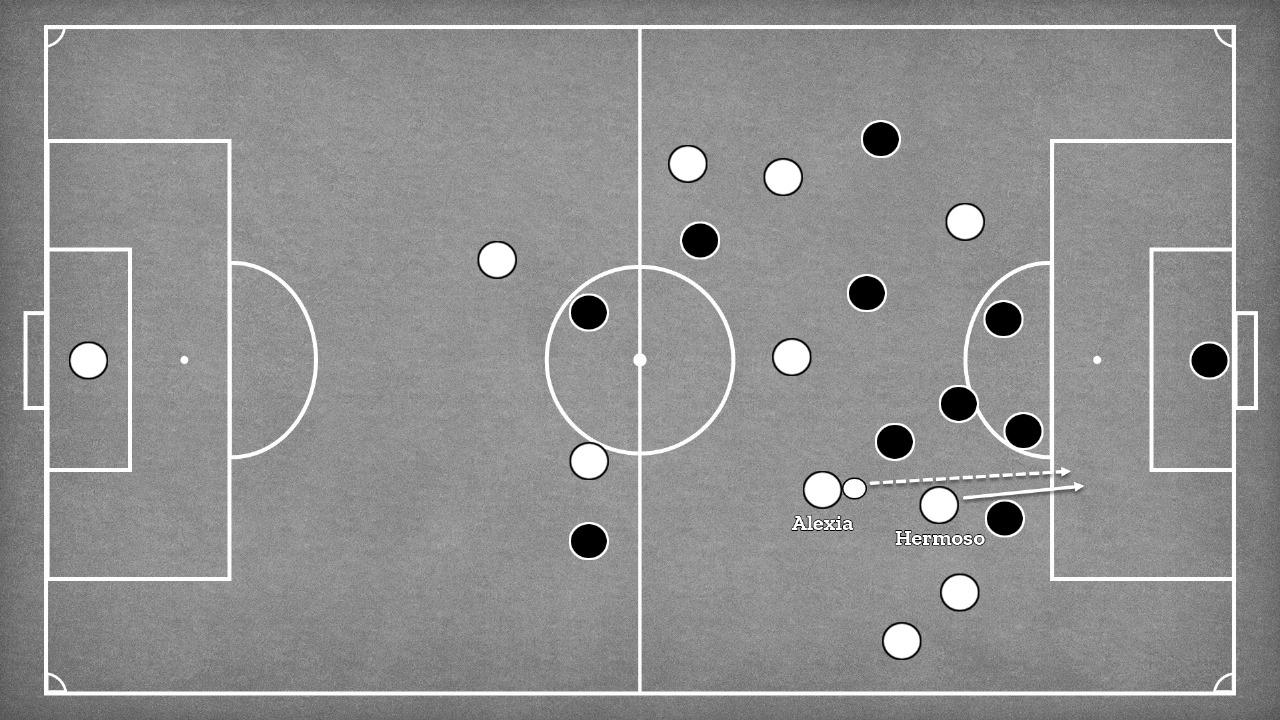
This example from their Liga F game against Real Sociedad above clearly illustrates her intelligent vision. Barcelona came up against Real Sociedad’s compact block and were building up play through the right flank. Marta Torrejón cuts the ball back for Jenni Heromso next to her, who in turn plays a pass into the slightly centrally-positioned Alexia. As Alexia receives the ball from Hermoso, she spots the striker’s run but also a small path for her to thread the ball through.
This pass had to be inch-perfect as she was confronted by three opposition players. The ball reaches Hermoso who ends up scoring. This entire passage of play wasn’t just an example of Barcelona’s excellent team play, but a demonstration of Alexia’s vision when there were no obvious spaces for her to use.
Shaping Barcelona’s Legacy
At the time of writing, Alexia will have only just turned 30 years old. Entering the prime of her career, there is still much for her to do but in terms of accolades — both team and individual — she has done it all. Her current list of awards already includes the aforementioned Ballon d’Or trophies, but also the two-time Best FIFA Women’s Player and two-time UEFA Women’s Player of the Year. Winning the FIFA Women’s World Cup in August 2023 was the crowning jewel for many of those Spanish players, but it ‘completed’ football for Alexia before 30 and that alone makes her the world’s best. Her individual brilliance and accomplishments have benefited Barça greatly and to some extent, has enhanced their reputation as one of the best club sides in the world.
While Barcelona will continue to thrive on the system that’s in place to bring in the next generation of talent, the legacy of Alexia will forever be etched in the walls of the Nou Camp. What Alexia has accomplished in 11 years is nothing short of remarkable but most important is the effect she’s left on women’s football as a whole. Teams have aspired to be like Barca and others have started to rival them. Their unique style of football has once again become an industry leader with players dreaming of donning the Blaugrana shirt. Alexia’s success has paved the way for a new wave of talent to push through and fight for their careers; the role model that many looked for in Andres Iniesta and Louisa Nécib now resembles Alexia Putellas instead. She is the face of Spanish and women’s football and is undeniably one of the greatest players to grace the grass.
This is an excerpt from Abdullah Abdullah's new book 'Rise of a New Dynasty: FC Barcelona Femeni's Emerging Legacy'. You can find it on Amazon and other notable online bookstores. Abdullah Abdullah is a scout, analyst and author who will occasionally contribute to BarcaFutbol as a guest writer.
Give him a follow and stay tuned for more Femeni content


